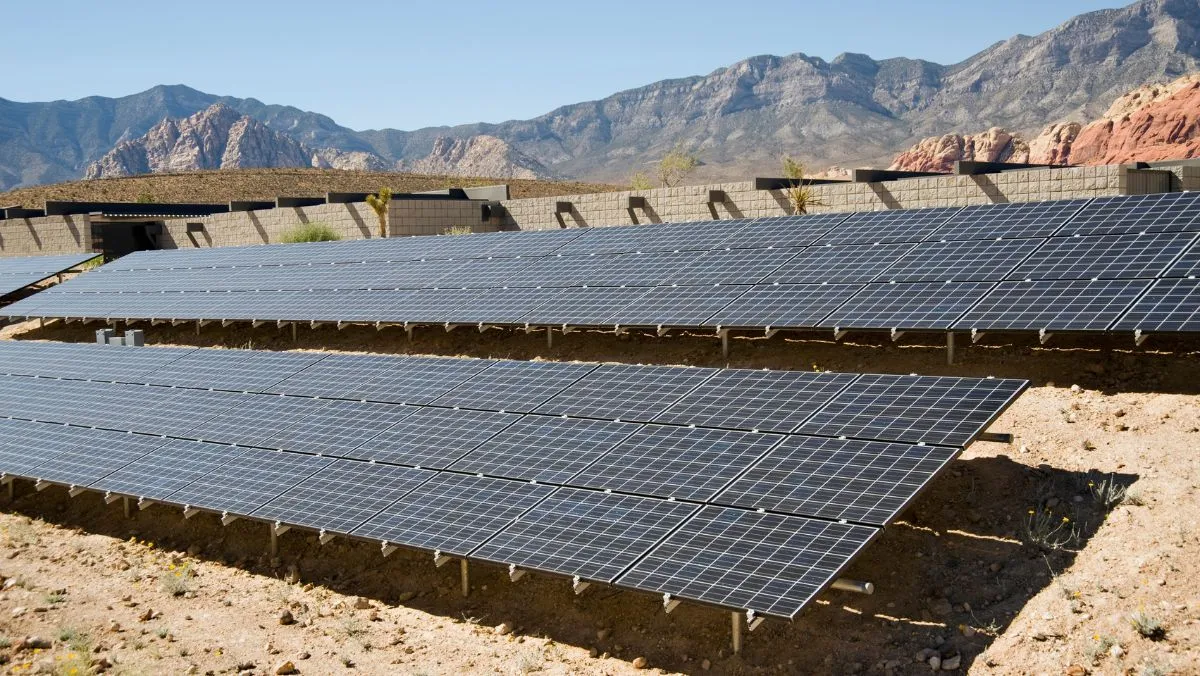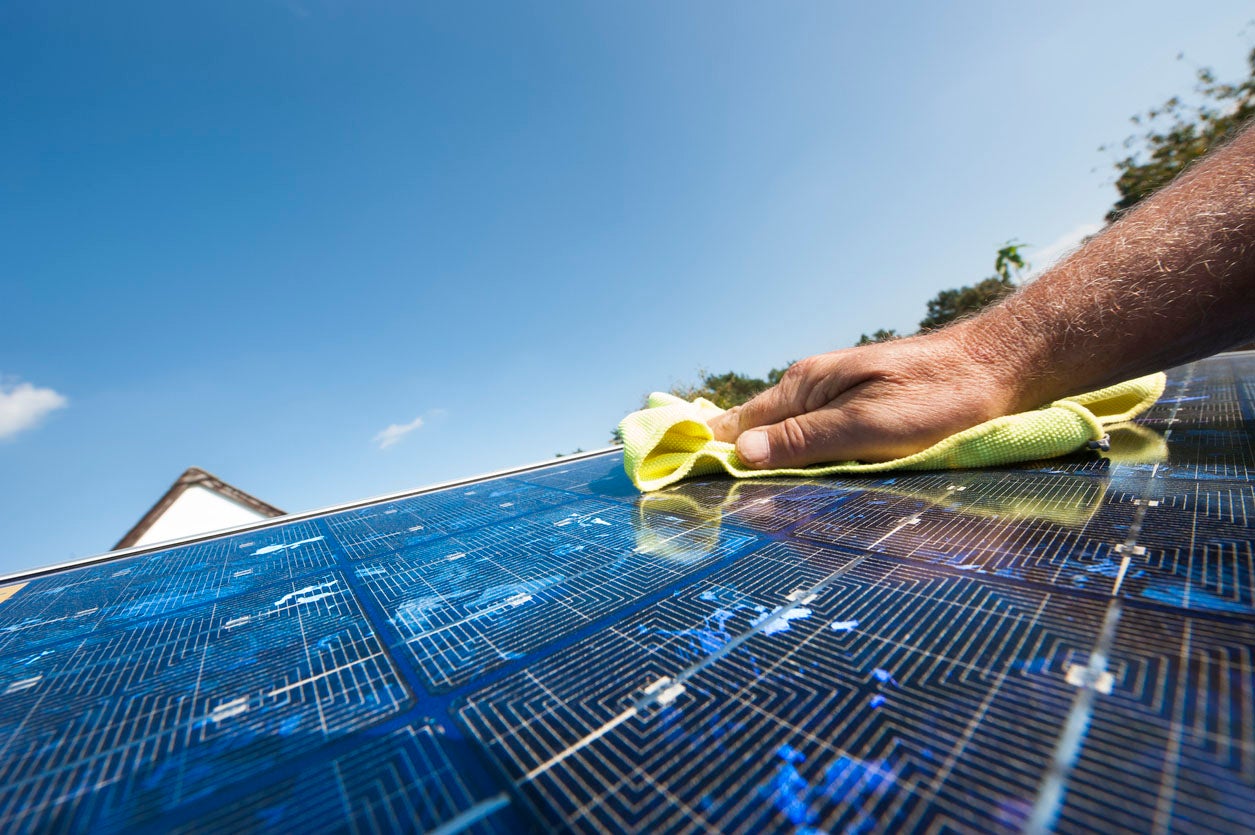Did you know that over 82% of the Sahara’s desert daylight hours are illuminated by the sun? Or that the Atacama desert in Chile is generally considered the sunniest place on earth? A seemingly logical question follows after observing these facts; Are deserts not the ideal place in which to build vast solar installations? What is the desert’s solar potential and how can we best exploit it?
Deserts, with their vast open spaces and relentless sun, hold an undeniable appeal for solar energy generation. The abundance of sunlight in these regions presents a big opportunity to produce clean and abundant power. Solar panels thrive in environments with high insolation, making deserts prime candidates for maximizing energy output. Harnessing just a fraction of the sun’s energy in these areas could potentially meet a significant portion of the global energy demand.
Reasons why deserts ARE a good choice for solar energy generation
Did you know that the 10 biggest solar plants are all located near a desert? Here are some of the reasons why deserts are extremely advantageous for solar energy generation:
1. Sunlight Abundance
Deserts receive some of the highest solar irradiance levels on the planet, ensuring consistent and robust energy generation year-round. The Sahara desert, for instance, receives over 300 hours of sunshine per year, or 11 hours 46 minutes of sunshine per day.

2. Land Availability
Vast expanses of uninhabited land in deserts provide ample space for large-scale solar installations without competing with existing land uses. This abundance of free space translates into increased profitability for most projects which seek to locate themselves in or near a desert.

3. Low Cloud Cover
Many desert regions experience minimal cloud cover, leading to higher panel efficiency as panels receive more direct sunlight. The result is a significant enhancement in the energy conversion process. With fewer obstructions in the form of clouds, solar panels in desert environments can consistently harness optimal levels of solar irradiance. This translates into higher electricity output and greater overall solar panel efficiency.

4. Minimal Environmental Impact
Properly planned solar farms can have a lower environmental impact in deserts compared to other ecosystems, as long as ecological considerations are taken into account. Their construction typically involves less land clearing and disturbance compared to projects situated in more biologically diverse areas, where sensitive habitats and ecosystems could be at risk.
Furthermore, the lower biodiversity density in deserts reduces the risk of significant ecological disruption. The potential for displacement of rare or endangered species is generally lower, provided that thorough environmental impact assessments are conducted and mitigation measures are implemented.

Reasons why deserts ARE NOT a good locale for solar energy generation
That being said, there are still obstacles to overcome before installing solar farms in deserts, namely related to their climate and their remoteness:
1. Transmission challenges:
Most deserts are far from populated areas where energy demand is highest. Establishing efficient transmission infrastructure to deliver power to cities can be complex and expensive. The distance between deserts and urban hubs poses logistical complexities in transmitting the generated power efficiently. Establishing robust transmission infrastructure across vast distances demands substantial investment and intricate engineering solutions.
2. Harsh Conditions:
Desert environments pose challenges to solar panel maintenance due to extreme temperatures, sandstorms, and dust accumulation, potentially affecting panel efficiency. Desert winds can whip up sandstorms, depositing abrasive particles that compromise panel surfaces. Dust accumulation further diminishes panel efficiency by casting shadows and reducing light absorption.

3. Water Scarcity:
Maintaining solar panels in arid desert landscapes presents a unique conundrum: the essential need for cleaning and the scarcity of water. Traditional panel cleaning methods often involve water, which can become a precious resource in water-scarce desert regions

4. Ecosystem Impact:
While desert ecosystems might seem less fragile, they are carefully balanced by nature and improper solar farm placement can still disrupt local flora and fauna.
| Advantages | Disadvantages |
|---|---|
Sunlight Abundance Deserts receive some of the highest solar irradiance levels on the planet, ensuring consistent and robust energy generation year-round. | Transmission Challenges Most deserts are far from populated areas where energy demand is highest. Establishing efficient transmission infrastructure to deliver power to cities can be complex and expensive. |
| Land Availability Vast expanses of uninhabited land in deserts provide ample space for large-scale solar installations without competing with existing land uses. | Harsh Conditions Desert environments pose challenges to solar panel maintenance due to extreme temperatures, sandstorms, and dust accumulation, potentially affecting panel efficiency. |
| Low Cloud Cover Many desert regions experience minimal cloud cover, leading to higher solar panel efficiency as panels receive more direct sunlight. | Water Scarcity Solar panel cleaning typically requires water. In water-scarce desert regions, this could become a logistical challenge or exacerbate existing water shortages. |
| Minimal Environmental Impact Properly planned solar farms can have a lower environmental impact in deserts compared to other ecosystems, as long as ecological considerations are taken into account. | Ecosystem Impact While desert ecosystems might seem less fragile, they are carefully balanced by nature and improper solar farm placement can still disrupt local flora and fauna. |
Conclusion
As we ponder the question of whether the world’s deserts could become our next great solar energy farms, we find ourselves at a pivotal crossroads. The potential to tap into the sun’s limitless energy in these regions is vast, yet it comes with complexities that demand thoughtful consideration. At WTS Energy, we remain committed to exploring the possibilities, advancing solar technology, and fostering sustainable energy solutions. The path forward lies in leveraging the abundant sun bathing Earth’s deserts while safeguarding the delicate balance of these unique ecosystems.
Are you looking for solutions for your energy projects, in the desert or in any other environment? Then make sure you contact us in order to draw from over 20 years of global expertise in the energy industry. We will provide you with the right solution for your project.



